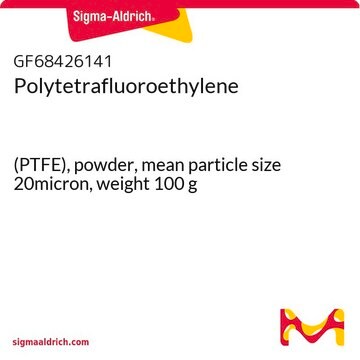SCCE016
Human Corneal Epithelial Cells
Human Corneal Epithelial Cells provide an ideal serum-free culture model without antimicrobials or phenol red when used with the EpiGRO Ocular Epithelia Complete Media Kit.
Synonym(s):
HCEC cells
Sign Into View Organizational & Contract Pricing
All Photos(1)
About This Item
UNSPSC Code:
41106514
eCl@ss:
32011203
NACRES:
NA.71
Recommended Products
biological source
human cornea (epithelial cells)
Quality Level
packaging
vial of 500,000 cells
manufacturer/tradename
Chemicon®
EpiGRO®
Millipore
morphology
(epithelial)
technique(s)
cell culture | mammalian: suitable
shipped in
liquid nitrogen
General description
Human Corneal Epithelial Cells may be used for studies of cell-matrix interactions, gene regulation and tissue development, drug development, and validation of alternative methods in toxicology. The Human Corneal Epithelial Cells are cryopreserved as secondary cells. The cells have been isolated from human corneal tissue and expanded twice in culture vessels before being harvested for cryopreservation. This product is for Research Use Only. This product is not approved for human or veterinary use, or for use in in vitro diagnostic or clinical procedures.
Product Source: Human Corneal Epithelia
Cell Line Origin
Cornea
Cell Line Description
Epithelial Cells
Application
Please see data sheet for detailed directions on Thawing, Plating , Feeding, Passaging, etc.
Research Category
Stem Cell Research
Stem Cell Research
Packaging
500,000 cells
Components
SCCE016
Quality
Cells are negative for HIV (1,2), HBV, HCV, bacteria, mycoplasma and fungal contamination.
Further growth: Guaranteed to provide 3 or more passages when grown in the appropriate EpiGRO Medium.
Further growth: Guaranteed to provide 3 or more passages when grown in the appropriate EpiGRO Medium.
Storage and Stability
To maintain the cells’ integrity, Millipore recommends unpacking the products immediately upon receipt and storing at a temperature lower than -150°C or in liquid nitrogen vapor phase.
Legal Information
CHEMICON is a registered trademark of Merck KGaA, Darmstadt, Germany
EPIGRO is a registered trademark of Merck KGaA, Darmstadt, Germany
Disclaimer
RESEARCH USE ONLY. This product is regulated in France when intended to be used for scientific purposes, including for import and export activities (Article L 1211-1 paragraph 2 of the Public Health Code). The purchaser (i.e. enduser) is required to obtain an import authorization from the France Ministry of Research referred in the Article L1245-5-1 II. of Public Health Code. By ordering this product, you are confirming that you have obtained the proper import authorization.
Unless otherwise stated in our catalog or other company documentation accompanying the product(s), our products are intended for research use only and are not to be used for any other purpose, which includes but is not limited to, unauthorized commercial uses, in vitro diagnostic uses, ex vivo or in vivo therapeutic uses or any type of consumption or application to humans or animals.
Storage Class Code
11 - Combustible Solids
WGK
WGK 1
Flash Point(F)
Not applicable
Flash Point(C)
Not applicable
Certificates of Analysis (COA)
Search for Certificates of Analysis (COA) by entering the products Lot/Batch Number. Lot and Batch Numbers can be found on a product’s label following the words ‘Lot’ or ‘Batch’.
Already Own This Product?
Find documentation for the products that you have recently purchased in the Document Library.
Wei Yang Seow et al.
Acta biomaterialia, 88, 293-300 (2019-02-06)
A short tetramer peptide, Ac-IVKC, spontaneously formed a hydrogel in water. Disulfide bonds were introduced via hydrogen peroxide (H2O2)-assisted oxidation, resulting in (Ac-IVKC)2 dimers. The extent of disulfide bond formation and gel stiffness increased with the amount of H2O2 used
Aung Than et al.
Nature communications, 9(1), 4433-4433 (2018-11-08)
Eye diseases and injuries impose a significant clinical problem worldwide. Safe and effective ocular drug delivery is, however, challenging due to the presence of ocular barriers. Here we report a strategy using an eye patch equipped with an array of
Adrian Gericke et al.
RSC advances, 9(39), 22531-22539 (2019-07-22)
Impaired regeneration of the corneal epithelium, as found in many ocular surface diseases, is a major clinical problem in ophthalmology. We hypothesized that corneal epithelial regeneration can be promoted by the physiological, energy-delivering as well as "morphogenetically active" polymer, inorganic
Qiaojuan Zhang et al.
Journal of neurochemistry, 151(2), 238-254 (2019-03-20)
Herpes simplex virus-type 1 (HSV-1) infection of sensory neurons may lead to a significant reduction in the expression of voltage-activated Na+ and Ca2+ channels, which can disrupt the transmission of pain information. Viral infection also results in the secretion of
Our team of scientists has experience in all areas of research including Life Science, Material Science, Chemical Synthesis, Chromatography, Analytical and many others.
Contact Technical Service






